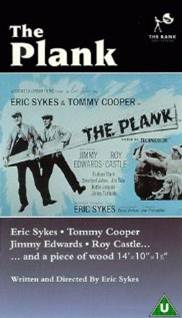For all of the criticisms of ANSI S3.22, this is a great standard… how’s that for an opening statement?
ANSI S3.22 is how hearing aids are assessed in the clinic as well as at the manufacturer’s facility. It is a quality control measure and known as a “reporting standard”. That is ANSI S3.22 tells us precisely how to measure a hearing aid to get well defined data such as frequency response, distortion levels, estimates of internal noise, gain, and even the highest sound level that can get through the hearing aid. Over the years it has changed slightly and the latest incarnation has relegated the attack time and the release time to the annex of the standard.
Yet, the attack time and the release time are important parameters and to a great extent will inform us how an individual may function with a hearing aid. Oh…. I forgot… ANSI S3.22 is “merely” a reporting standard and has little to do with how an end user of a hearing aid may function. To my knowledge, there are no “performance standards” in existence in the hearing aid realm.
A performance standard would be really quite interesting and potentially very useful. Such a “pie-in-the-sky” theoretical standard would specify what the distortion levels should be; what the attack time for the compression system should be; what the gain and output should be; … and so on.
Clinically we have certain gut feelings about how a hearing aid should function but according to ANSI S3.22 if a hearing aid is made of chocolate, and is supposed to distort at 100% and generate 0 dB of gain, as long as the hearing aid being tested does precisely that, then the hearing aid is functioning according to the specification.
We generally expect the distortion to be less than 10%, we expect the equivalent noise level to be less than 20 dB, and we expect the attack time to be rather short, except if a person has cognitive difficulties, the attack time should be longer. But even these rules of thumb are simplistic and only get us into the ball park.
Personally I feel that we are not at the point where we can indeed design a “performance standard”, but given that we already have ANSI S 3.22 (a “reporting standard”) maybe we can modify it to be slightly more receptive to music as an input rather than speech.
Once of the big tests that are performed according to ANSI S3.22 is a measurement of “reference test gain”. This is defined as the OSPL90 – 77 dB where the OSPL90 is the highest level that can be transduced through a hearing aid.
The 77 dB is quite interesting. It is 65 dB SPL + 12 dB.
Well, 65 dB SPL (RMS) is the average level of conversational speech at 1 meter but where does the 12 dB come in? This is the crest factor and has nothing to do with cavities (except for a 2 cc cavity…. that’s a joke by the way…). The crest factor is the difference in dB between the instantaneous peak amplitude of a speech signal and its broadband average. For speech, the crest factor is 12 dB… hence OSPL90- 77 dB.
This 12 dB is a direct consequence of how speech is generated- all speech is generated from a highly damped mouth and nose that is about 17 cm long where the mouth and the nose are in parallel. There is snot, a narrow nostril opening, a soft tongue, a soft palate, soft cheeks, and soft lips, and of course, saliva. What is ultimately generated has peaks that are “only” 12 dB above its average.
Music is generated by hard walled musical instruments. They have smooth, hard wood, brass, or even plastic surfaces and the narrow openings are minimized. Because of this relative lack of damping with musical instruments, the peaks tend to be higher than just 12 dB above the average- I have measured musical instrument crest factors of 18-25 dB.
A music reporting standard, like the one for speech (ANSI S3.22) should be at least close to what is actually, and optimally generated in the human ear.
The music “reference test gain” should now be OSPL90 – 83 dB (or even – 90 dB). This will be 8-13 dB lower than one for speech.
This of course is simplistic. I have used what was intended and designed as merely a reporting standard, for purposes that it was not intended to be used.
I am not sure that we need any more standards for non-speech input stimuli; at least not until we begin talking about performance standards, and not just reporting standards…. or do we?











Thank you, Marshall. Great article and spot on. As a performing musician I have always wondered why the “stock” settings are so far off, and I think you have a good point.
I use a target rule of DSLv5 Adult and that helps quite a bit. And, at least in my experience, I have found problems with the MPOs overlapping the 80db curve, and fidelity at 80db+ is a must for musicians.